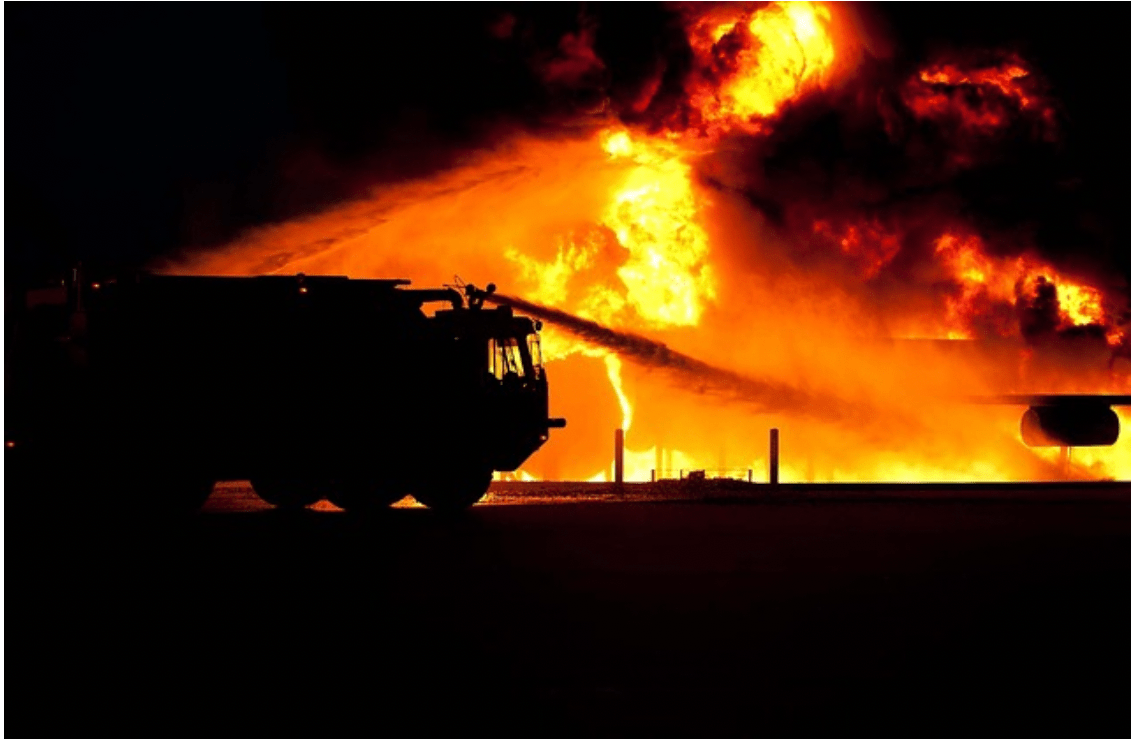US
Shielding Lives and Assets – Fire Watch Protections in America

Fire safety is a matter of utmost importance in the United States. Fire watch protection is an invaluable service that can prevent and mitigate fires from escalating, saving lives and assets. Fire watch protection involves a guard actively patrolling a property to detect and prevent potential fire hazards before they become an issue. This article will provide an overview of fire watch protections in America, focusing on the services available, the role of firefighters, and the benefits of fire watch services.
Fire Watch Protections
Fire watch protections are crucial for safeguarding lives and assets in America. The National Fire Protection Association (NFPA) mandates that every commercial building should have a functional fire alarm system, an automatic sprinkler system, and fire extinguishers. However, there are times when these safety measures fail or get damaged due to construction work or maintenance activities. In such cases, temporary fire watch protections become necessary.
Temporary fire watch protections require trained personnel to monitor the building’s premises 24/7 until the primary safety systems are fully operational again. This is particularly important for high-rise buildings where the evacuation process takes time and may pose a challenge during emergencies. Moreover, the presence of trained personnel on-site ensures that any potential hazards can be identified early on and dealt with before they escalate.
In conclusion, implementing proper fire watch protections is essential in ensuring the safety of people and property in America. It not only complies with NFPA standards but also provides peace of mind to building owners, managers, employees, and visitors alike knowing that there are efficient emergency response plans in place if an unfortunate situation arises.
The Need for Fire Watch Services
Fire watch services are becoming increasingly important to protect lives and assets in America. When businesses or buildings are undergoing construction or repairs, the fire sprinkler systems may be temporarily out of order, leaving the building vulnerable to fire damage. Fire watch services provide a temporary solution by employing trained personnel who remain on site to detect and prevent fires.
In addition to construction sites, fire watch services are also necessary for buildings that have experienced power outages or other malfunctions that could disable their fire safety systems. Fires can occur at any time and without warning, so it is vital to have someone on hand who can quickly respond and alert authorities if necessary.
Overall, investing in fire watch services is a small price to pay compared to the potential cost of property damage or loss of life caused by a preventable fire. With proper planning and implementation of these preventative measures, businesses and individuals can rest easy knowing they are doing everything possible to keep themselves and others safe from harm.
Safety Regulations & Standards
Fire watch is a critical fire protection service that ensures the safety of lives and assets in America. One of the primary reasons why fire watch services are essential is because they help detect fire hazards before they cause significant damage. During a fire watch, trained personnel patrol designated areas to identify potential risks and address them promptly. This process involves inspecting electrical equipment, flammable materials, and other potential sources of ignition.
To ensure adequate protection for lives and property during a fire watch operation, it’s essential to adhere to specific safety regulations and standards. These regulations provide guidelines on how to conduct fire watches effectively while minimizing risks associated with firefighting activities. For instance, OSHA (Occupational Safety and Health Administration) has established standard 1910.157 that outlines requirements for portable firefighting equipment accessibility in workplaces.
In conclusion, adhering to safety regulations and standards during a fire watch operation can significantly enhance the efficiency of firefighting efforts while reducing the risk of injury or loss of life. It’s crucial to work with certified professionals who understand these guidelines so that you can be confident in their ability to protect your assets effectively.
Potential Challenges & Solutions
One of the major challenges faced by fire watch protection companies in America is the high demand for their services during peak seasons. During these periods, there is often a shortage of skilled professionals to carry out necessary tasks like monitoring alarm systems, patrolling buildings, and maintaining firefighting equipment. This often results in delays and gaps in coverage which can be detrimental to businesses and property owners. To mitigate this challenge, fire watch protection companies can invest in training programs for their staff or partner with recruitment firms to ensure they have access to a pool of qualified personnel.
Another potential challenge for fire watch protection firms is the issue of compliance with regulations set by local and federal authorities. These regulations often require that certain standards are met regarding equipment maintenance, emergency response plans, and employee training. Failure to comply with these regulations could lead to fines or legal repercussions that could harm the reputation and financial stability of the company. To overcome this challenge, fire watch protection firms need to stay up-to-date on changes in regulations through continuous education and collaboration with industry associations such as The National Fire Protection Association (NFPA). Additionally, they should invest resources into ensuring that their policies and procedures align with regulatory requirements.
US
Creating Safe Havens: Inside Genesis USA’s Vision for Inclusive Housing

GenesisUSA, a nonprofit based in Arlington, Texas, works to improve the lives of disabled veterans and children who have lost their parents. Led by Charles Ford, the organization goes beyond providing financial aid. It focuses on long-term solutions, like building wheelchair-accessible homes, to support independence and dignity for those in need. With rising housing costs and growing inequality, GenesisUSA’s mission addresses a critical gap.
Ford and his team create supportive environments that help promote self-reliance in underserved communities. As a smaller, community-based organization, it addresses challenges that can be difficult for larger organizations to manage. Its work shows how local initiatives can make a noticeable difference.
A Growing Crisis: The Need for Accessible Housing
The demand for affordable and accessible housing continues to grow. A 2023 report from the National Low Income Housing Coalition estimated that more than 11 million U.S. households need homes with accessibility features. This challenge is more pronounced for disabled veterans, with nearly four million living in homes that do not meet their physical needs.
“Our veterans have sacrificed a lot for this country, but many still face housing that doesn’t suit their needs,” Ford says. “Beyond merely providing them shelter, we’re creating a space where they can live comfortably.”
GenesisUSA is responding by building homes designed for accessibility. These houses include ramps, wider doorways, and modified kitchens and bathrooms to allow veterans to live more independently. The organization also plans to create supportive environments for children who have lost their parents, many of whom also face mobility challenges.
Ford’s Community-Driven Leadership at GenesisUSA
Ford’s years of experience in construction and his dedication to charitable work have shaped his leadership at GenesisUSA. He stays closely involved, often meeting veterans and families to learn about their needs firsthand. “For me, it’s about building personal connections,” Ford says. “Large charities sometimes miss the individual stories.”
The community focus defines Ford’s leadership. Although some wonder if a smaller nonprofit can make a meaningful impact, Ford is confident. “We don’t have celebrity endorsements or huge budgets, but we have real relationships with the people we help,” he says. His dedication to grassroots efforts sets GenesisUSA apart from larger, more structured organizations.
GenesisUSA has already helped over 100 people and aims to expand its impact with affordable, accessible housing solutions. One notable feature is the inclusion of a wheelchair-accessible swimming pool, which has received positive feedback. Ford says, “We’re creating spaces where people can enjoy life fully, just like everyone else,” which reflects the organization’s mission to support independence and inclusion.
Building More Than Homes: A Reflection of Hope
Ford looks back on GenesisUSA’s progress with a clear sense of purpose. “We’re not simply building homes, we’re offering hope and building opportunities for independence,” he says. “We’re here to support veterans who face mobility challenges and children who have lost their parents, offering them a chance at a more self-reliant life.”
As the organization’s reach expands, so does its ability to impact lives across the country. Its work embodies Ford’s dedication to ensuring that no one is overlooked. Ford envisions scaling their efforts while maintaining the personalized approach that defines their model.
“We’re still in the early stages,” he notes. “As we grow, we’ll continue to prioritize individual needs. Our success hinges on the improved quality of life for each person we help.”
As the demand for accessible, supportive housing rises, organizations like GenesisUSA play an important role in filling gaps left by larger institutions and government programs. Through its focus on tailored support and community-driven solutions, GenesisUSA is building a model for how smaller nonprofits can significantly impact and address pressing social needs.
-

 Tech4 years ago
Tech4 years agoEffuel Reviews (2021) – Effuel ECO OBD2 Saves Fuel, and Reduce Gas Cost? Effuel Customer Reviews
-

 Tech6 years ago
Tech6 years agoBosch Power Tools India Launches ‘Cordless Matlab Bosch’ Campaign to Demonstrate the Power of Cordless
-

 Lifestyle6 years ago
Lifestyle6 years agoCatholic Cases App brings Church’s Moral Teachings to Androids and iPhones
-

 Lifestyle4 years ago
Lifestyle4 years agoEast Side Hype x Billionaire Boys Club. Hottest New Streetwear Releases in Utah.
-

 Tech7 years ago
Tech7 years agoCloud Buyers & Investors to Profit in the Future
-

 Lifestyle5 years ago
Lifestyle5 years agoThe Midas of Cosmetic Dermatology: Dr. Simon Ourian
-

 Health6 years ago
Health6 years agoCBDistillery Review: Is it a scam?
-

 Entertainment6 years ago
Entertainment6 years agoAvengers Endgame now Available on 123Movies for Download & Streaming for Free
